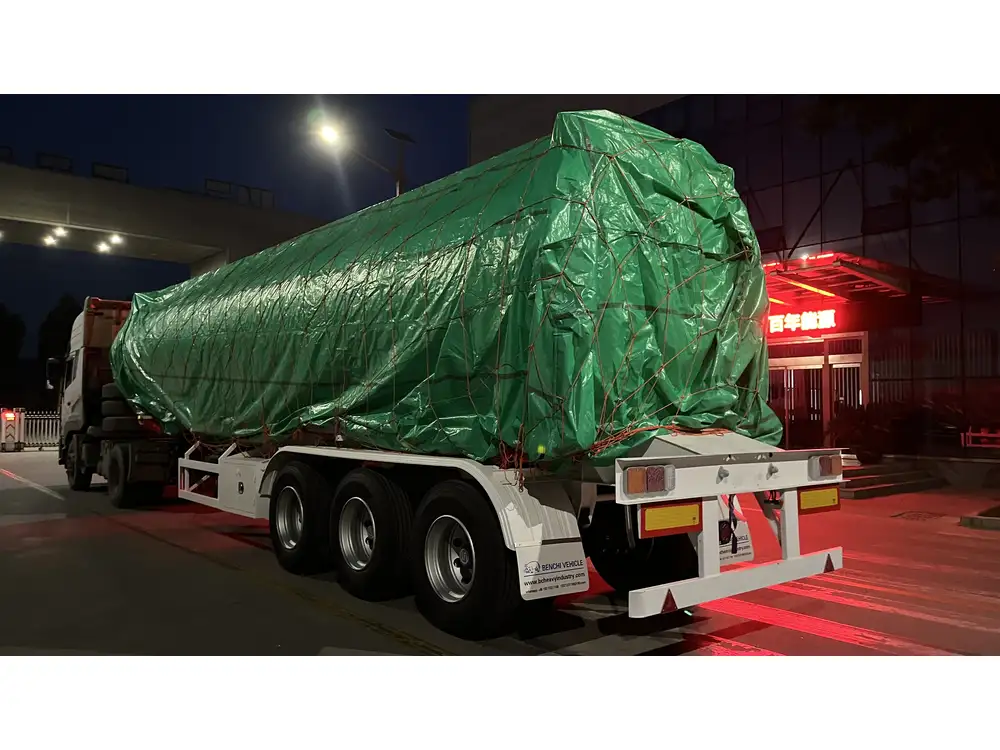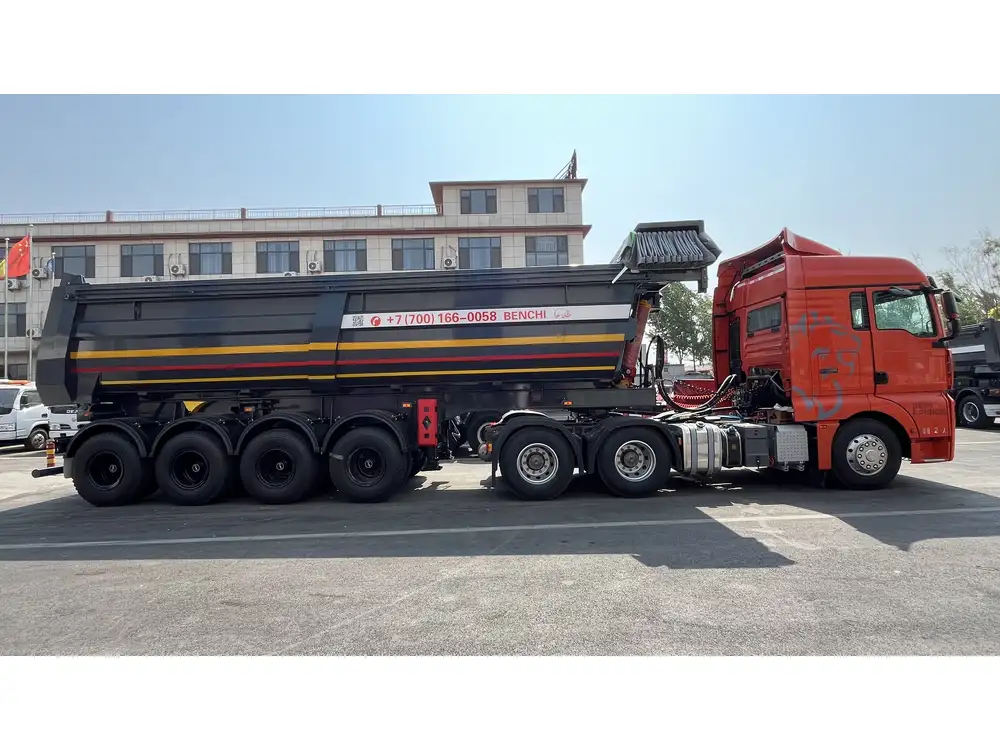When venturing into the world of semi-trailer lights, one critical component often emerges in discussions: the ohm resistor. Understanding the significance of using an ohm resistor in the wiring of semi-trailer lights is paramount to ensuring both functionality and safety on the road. This article aims to elaborate on the importance, benefits, and application of ohm resistors, enhancing your knowledge and assisting you in making informed decisions regarding semi-trailer lights.
What Are Ohm Resistors?
At its core, an ohm resistor is an electrical component that limits the current flowing through a circuit while ensuring a stable voltage. Resistors are commonly measured in ohms, which indicates their resistance level. For wiring semi-trailer lights, such resistors play a crucial role in preventing excessive current from damaging the lights and associated electrical components.
Types of Resistors:
- Standard Resistors: Often utilized in basic circuit applications.
- Variable Resistors: Adjustable resistors that allow for changing resistance levels.
- Power Resistors: Designed to dissipate high amounts of power effectively.

Why Choose Ohm Resistors for Semi-Trailer Lights?
1. Current Limitation
One of the primary reasons for incorporating ohm resistors in semi-trailer lights is to limit current. Excessive current can lead to short circuits, overheating, and ultimately, failure of the lighting system. Ohm resistors act as a barrier, regulating the current to a manageable level, thereby prolonging the lifespan of the lights.
2. Voltage Stabilization
In addition to current limitation, ohm resistors assist in maintaining a stable voltage level across the circuit. Fluctuating voltage can lead to inconsistent lighting performance, resulting in visibility issues and potential accidents on the road. By providing voltage stabilization, ohm resistors enhance the reliability of semi-trailer lights.

3. Prevention of Flickering Lights
Flickering lights can pose a significant risk when driving, creating confusion for both the driver and other road users. The integration of an ohm resistor helps mitigate this issue by ensuring a smooth flow of electricity, thus preventing erratic light behavior.
The Application of Ohm Resistors in Semi-Trailer Light Systems
Wiring Configurations
When deploying ohm resistors in wiring configurations for semi-trailer lights, several factors should be considered, including the type of lighting system, the total load on the circuit, and the specific resistor values necessary for optimal performance.
Typical Wiring Diagram for Semi-Trailer Lights
| Component | Description |
|---|---|
| Power Source | Battery or vehicle electrical system |
| Light Fixtures | Stop lights, turn signals, running lights |
| Ohm Resistors | Placed in line with the circuit as necessary |
| Switches/Fuses | Control and protect the circuit from overloads |

Choosing the Right Resistor Value
Selecting the appropriate ohm resistor value is crucial. The selection process generally involves the following steps:
- Identify the Total Current Requirement: Assess the combined amperage draw of all lights.
- Calculate Desired Resistance: Use Ohm’s Law (V = IR) to determine the necessary resistance level.
- Test and Adjust: Conduct tests to see if adjustments are needed for optimal performance.
Common Issues and Solutions in Wiring Semi-Trailer Lights
Problem 1: Lights Burn Out Quickly
- Cause: Excessive current due to incorrect voltage levels.
- Solution: Use a resistor to limit the current flowing through the lights.

Problem 2: Inconsistent Light Performance
- Cause: Voltage fluctuations caused by varying loads.
- Solution: Implement ohm resistors to help stabilize voltage across the circuit.
Problem 3: Flickering of Lights
- Cause: Instability in the circuit due to poor connections or overload.
- Solution: Ensure proper wiring practices and introduce resistors as needed to maintain consistent current flow.
Comparison: Resistor Usage vs. No Resistor Usage
| Aspect | With Ohm Resistor | Without Ohm Resistor |
|---|---|---|
| Light Lifespan | Extended due to controlled current | Shortened due to excess current |
| Performance Consistency | High, stable light output and behavior | Low, potential flickering or dimming |
| Risk of Overheating | Minimized due to regulated current | Increased risk of overheating |
| Electrical Damage | Reduced likelihood of circuit damage | Higher chances of circuit failure |

Best Practices for Wiring Semi-Trailer Lights with Resistors
- Use Quality Resistors: Ensure that the resistors used are rated for automotive applications to avoid premature failure.
- Adequate Rating: Select resistors with power ratings suited for the application; high wattage is advisable for heavy-duty applications.
- Regular Inspections: Conduct routine checks on the wiring system, including resistors, for wear and potential issues.
Handling Resistance in Complex Lighting Systems
LED vs. Incandescent Lighting
The integration of LED lights in semi-trailers presents unique challenges compared to traditional incandescent lights. LEDs typically require lower power, making them susceptible to problems with current levels. Using appropriate ohm resistors helps alleviate issues related to current flow, ensuring that LEDs operate efficiently and do not burn out prematurely.

Complex Wiring Configurations
In semi-trailer setups that include advanced features like brake lights and signal indicators, it’s essential to factor in additional resistance caused by multiple connections. Implementing a centralized resistor strategy can streamline the management of current and voltage across various light fixtures.
Resistor Placement Strategies
- In-Series: Placing the resistor in series with the light fixture will effectively limit current flow to that specific circuit.
- In-Parallel: Providing a parallel path for the current ensures that the light receives the necessary voltage if one branch fails.
FAQs About Ohm Resistors in Trailer Light Wiring

Why do I need to use a resistor for LED lights in my trailers?
LED lights operate at lower power levels compared to traditional lights. Without resistors, the risk of overheating and subsequent failure increases due to disrupted current flow.
What happens if I use an insufficient resistor value?
Using a resistor with too low a resistance value can lead to excessive current, risking damage to the light and potentially causing short circuits.
How do I know if my resistor is functioning correctly?
Visual inspections can often provide clues. Signs of overheating, discoloration, or damaged connections are indicators of failure. Additionally, measuring current flow with a multimeter can verify performance.

Conclusion
The role of ohm resistors in the wiring of semi-trailer lights cannot be understated. Their ability to manage current and stabilize voltage is fundamental to maintaining the integrity and functionality of lighting systems. By incorporating these components thoughtfully into your electrical configurations, you not only improve safety but also enhance the longevity and performance of your semi-trailer lights. As we continually strive for excellence in design and engineering, understanding these components allows us to achieve optimal results on the road. Embrace the use of ohm resistors, and ensure your semi-trailer lighting system remains a beacon of reliability.



